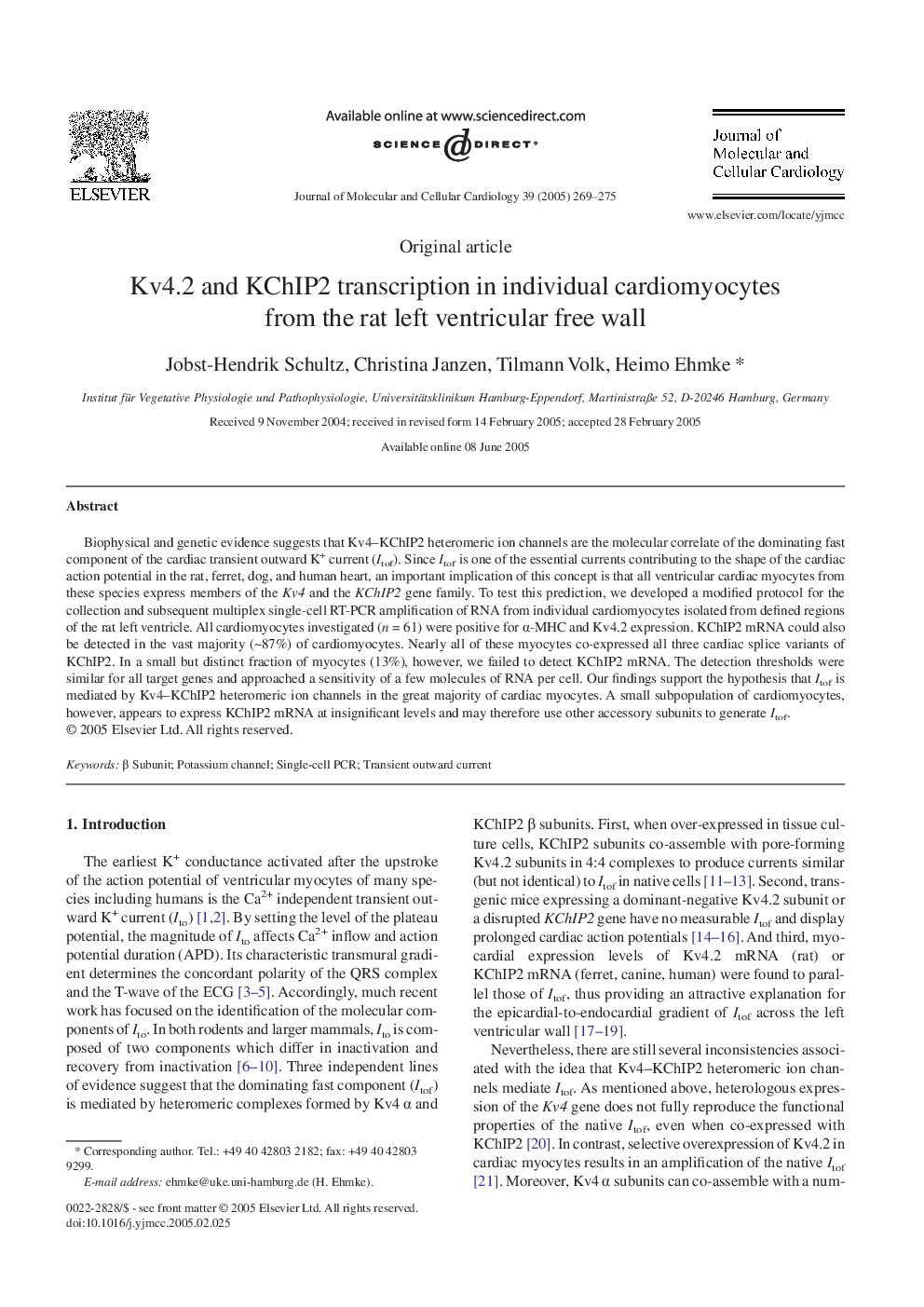| Article ID | Journal | Published Year | Pages | File Type |
|---|---|---|---|---|
| 10954349 | Journal of Molecular and Cellular Cardiology | 2005 | 7 Pages |
Abstract
Biophysical and genetic evidence suggests that Kv4-KChIP2 heteromeric ion channels are the molecular correlate of the dominating fast component of the cardiac transient outward K+ current (Itof). Since Itof is one of the essential currents contributing to the shape of the cardiac action potential in the rat, ferret, dog, and human heart, an important implication of this concept is that all ventricular cardiac myocytes from these species express members of the Kv4 and the KChIP2 gene family. To test this prediction, we developed a modified protocol for the collection and subsequent multiplex single-cell RT-PCR amplification of RNA from individual cardiomyocytes isolated from defined regions of the rat left ventricle. All cardiomyocytes investigated (n = 61) were positive for α-MHC and Kv4.2 expression. KChIP2 mRNA could also be detected in the vast majority (~87%) of cardiomyocytes. Nearly all of these myocytes co-expressed all three cardiac splice variants of KChIP2. In a small but distinct fraction of myocytes (13%), however, we failed to detect KChIP2 mRNA. The detection thresholds were similar for all target genes and approached a sensitivity of a few molecules of RNA per cell. Our findings support the hypothesis that Itof is mediated by Kv4-KChIP2 heteromeric ion channels in the great majority of cardiac myocytes. A small subpopulation of cardiomyocytes, however, appears to express KChIP2 mRNA at insignificant levels and may therefore use other accessory subunits to generate Itof.
Related Topics
Life Sciences
Biochemistry, Genetics and Molecular Biology
Cell Biology
Authors
Jobst-Hendrik Schultz, Christina Janzen, Tilmann Volk, Heimo Ehmke,
